Great Ways to Dress a Bay Window
http://decor-ideas.org 04/09/2014 02:24 Decor Ideas
Bay, box and bow windows are desirable, worthwhile and sought-after architectural elements. But once you own one, how are you going to dress it? That dilemma can quickly turn a point of pride into a source of frustration.
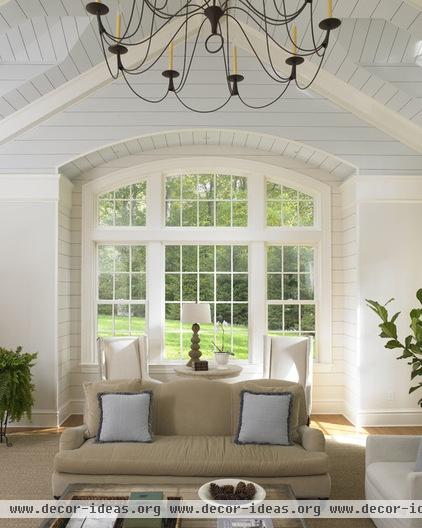
Just so we are all on the same page, a box window is a window set back from the room with walls that are perpendicular to it. Sometimes those little walls will contain windows; sometimes they won’t.
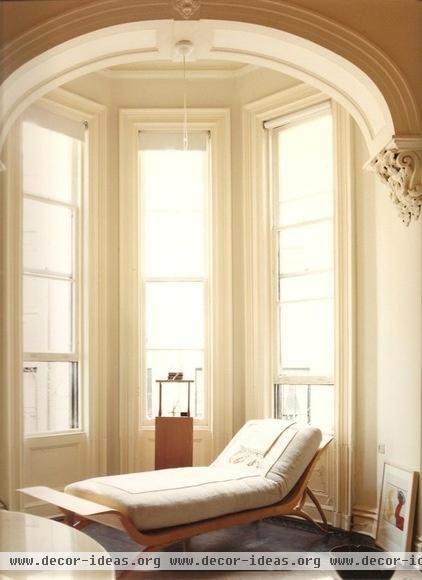
A bay window is stepped out from the room with side windows that are angled off the center window. Those windows can all be the same size, or the center can be a larger one that is flanked by smaller windows.
When you are planning your window treatment, never assume that the angles are uniform. Life is seldom that easy.
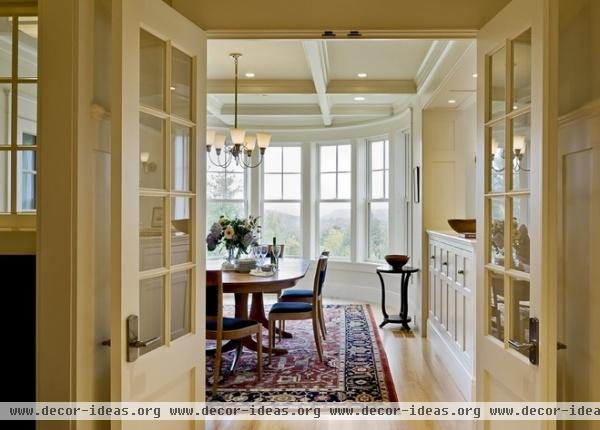
A bow window eschews straight lines, and instead extends out of the room in a more or less gentle curve.
Honestly, these windows are often so gorgeous that no treatment at all is the best treatment.
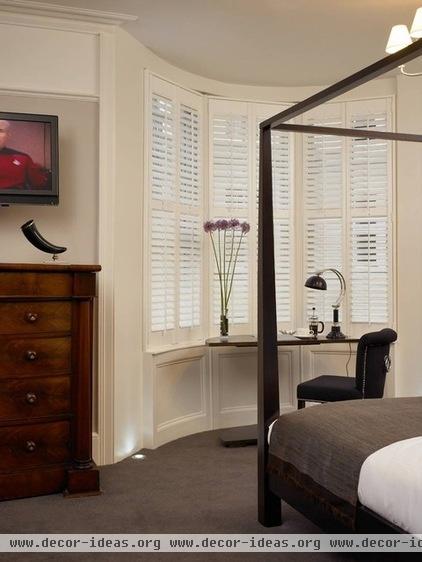
Multiple factors will influence if and how you choose to treat these architectural beauties, but privacy is often the overriding concern. In those situations, shutters are a lovely solution. They admit light but can be closed tightly. When they are painted to match the window millwork, they almost disappear, allowing the beauty of the window to shine.
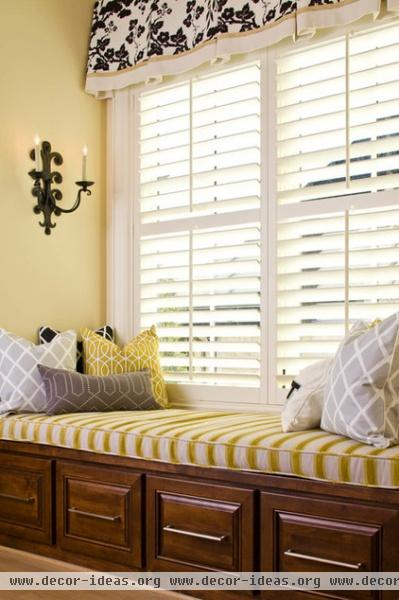
For more of a dressed feel, add a simple boxed valance to your shuttered window. Mounting it above the window maximizes the light.
On a side note, don’t you love the artfully unmixed fabrics that adorn this vignette?
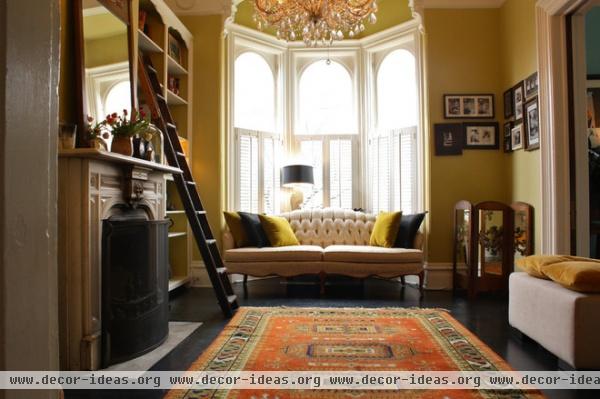
Covering only the lower half of the window with shutters is an equally good approach …
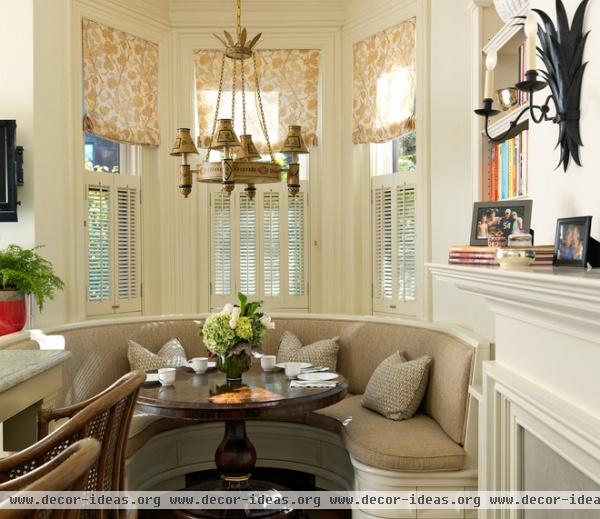
… and you can soften the look in the loveliest way by adding Roman shades to the top portion.
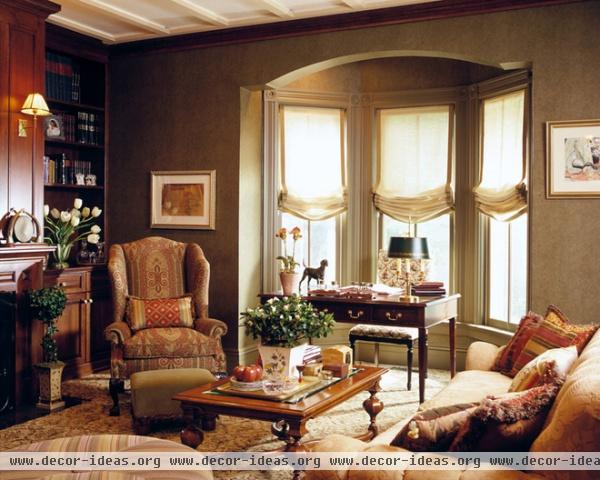
Roman shades and bay windows go together as naturally as chocolate and strawberries. Shades can be made from almost any fabric and come in a variety of styles.
But realize that some Romans are better than others if you want an operable shade (one that lowers to cover your window). Lovely, relaxed Romans like these, for example, with their unconstructed feel and gently curving bottoms, are a total pain to raise and lower. You can never seem to get the shade to lie properly. Therefore, it’s best to use them when privacy is not an issue and you can leave them in the same position all the time.
Think of them as a stunning pair of 5-inch spike heels: You want to sit and show them off, but the less walking, the better.
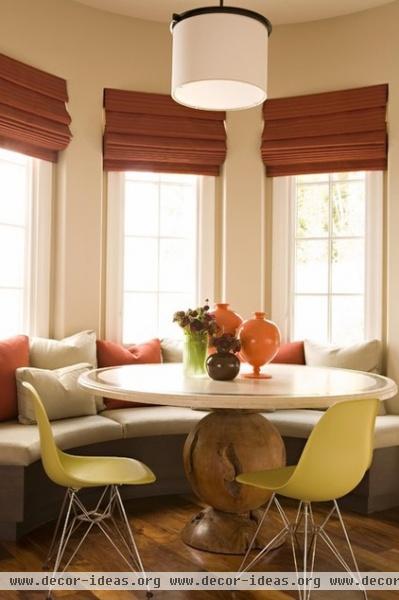
Operable Romans will provide you with privacy, but the amount will depend on the weight of your fabric and whether or not the shades will be lined. Bear in mind that a lined medium-weight fabric not only can be physically heavy to operate; it can take up a lot of room at the top of your window. Make sure you know exactly how much window the retracted shade will cover before you pull out your checkbook.
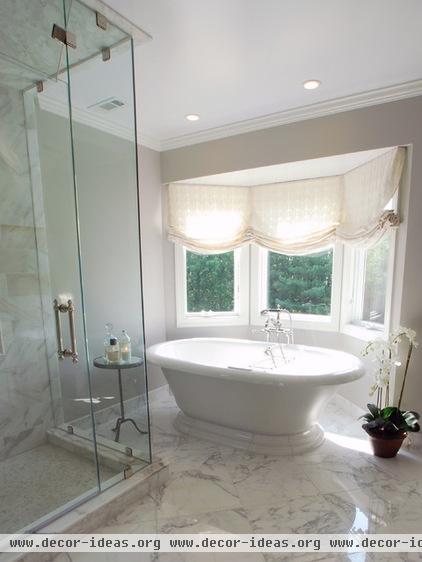
Mounting Roman shades outside the window trim, rather than inside, makes it easier to keep more of the window pane exposed. If there’s enough room above your window, most of the Roman’s stack can be on the wall rather than on the window.
The downside is that you will have added substantially to the width — and thus to both the stack and the weight — and will have hidden some of your window’s millwork.
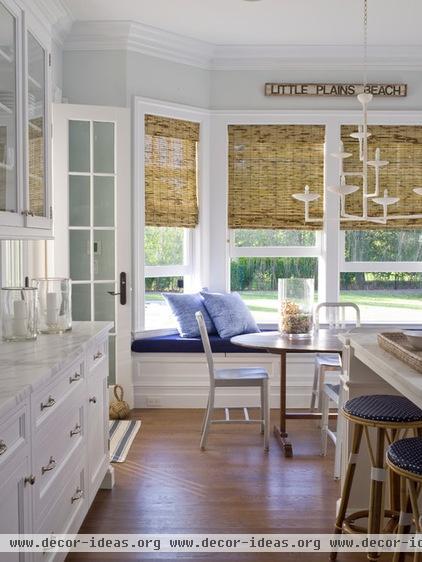
Another very clean choice for privacy is woven wood. Again, mounted inside, these shades complement the beauty of the window while adding an organic, comfortable feel. The amount of window they will cover can be an issue with these, as well, so make sure to consider that.
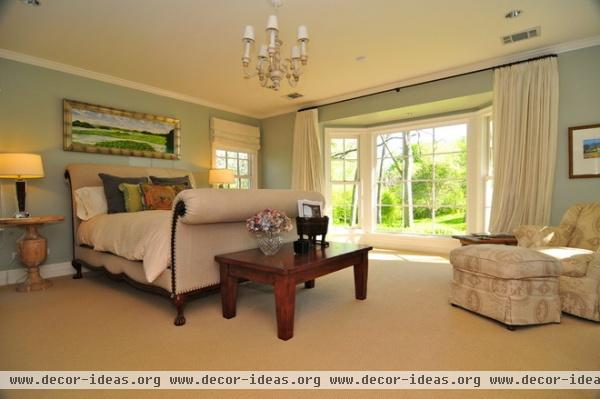
Traversing draperies represent the other side of the window treatment spectrum. These will normally be mounted on the wall from which the window protrudes, so you will need adequate stack on each side of the window if you don’t want to lose your window altogether. Check out my ideabook covering the issues around traversing draperies for more help with this.
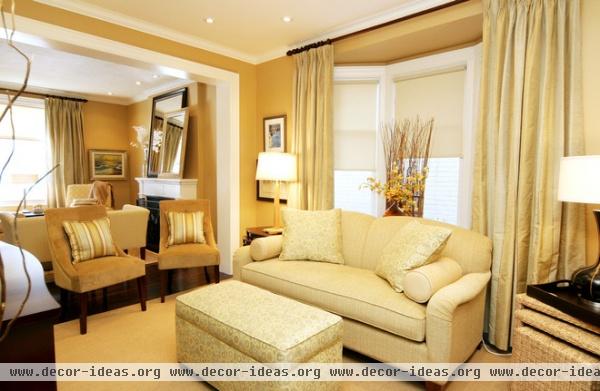
Traversing draperies are for you if you don’t mind taking the emphasis away from your bay window and your view — which is perfectly all right. It’s simply a matter of personal taste.
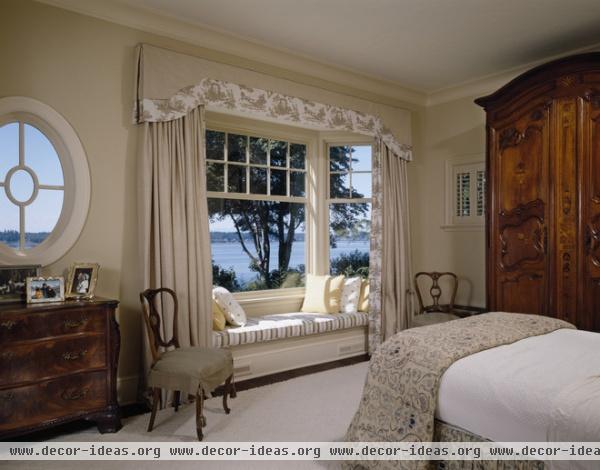
Adding a valance to drapes creates a very ensconcing, Hobbit-hole feeling. Just don’t be surprised to find neighbor children or cats napping happily in the recesses of the cushion.
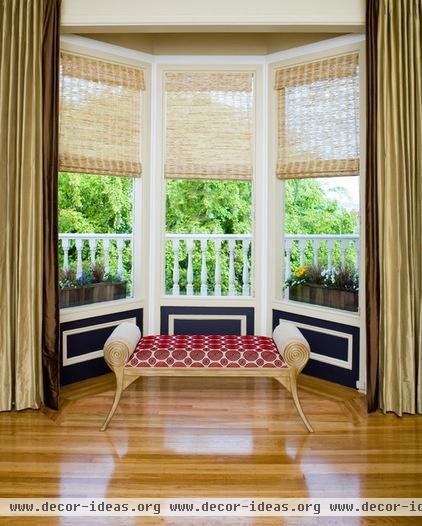
Perhaps you like the idea of panels flanking your window, but really don’t embrace the visual weight or the potential expense of a traversing treatment. No problem! Stationary panels married with some kind of shade can be equally effective and lovely.
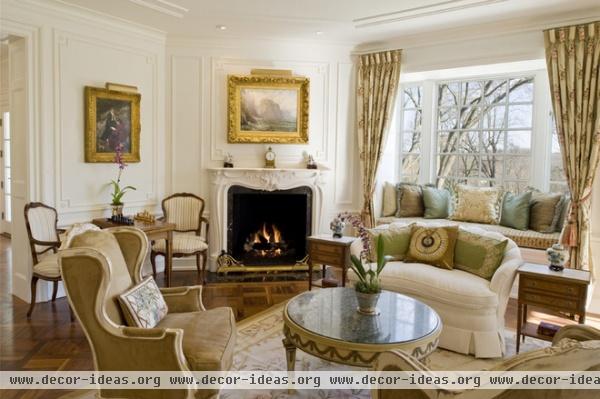
Tying the panels back will reveal even more of the window. This is a good choice if you are going to mount the panels inside your bay, bow or box.
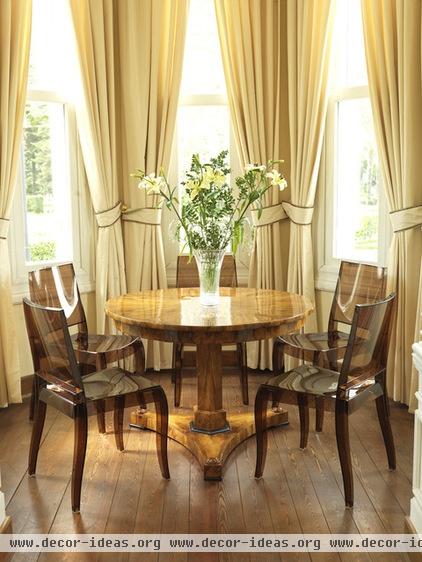
In this treatment there’s a pair of panels on each of the windows making up the bay. Tying them back allows light in, while dropping the tieback would offer privacy. A treatment like this is especially good if your window does not have gorgeous trim.
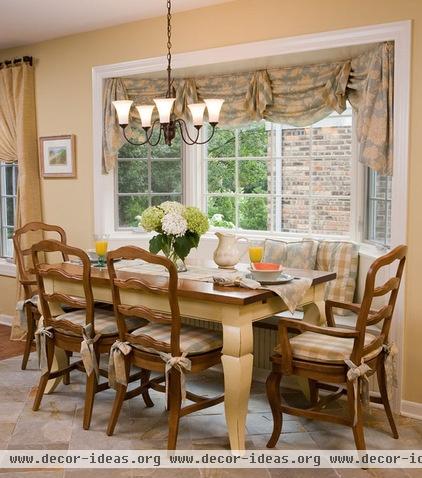
Or you may want to keep things simple and add only a top treatment. This can be an excellent idea if your window has a seat that, as in this eating area, gets a lot of use.
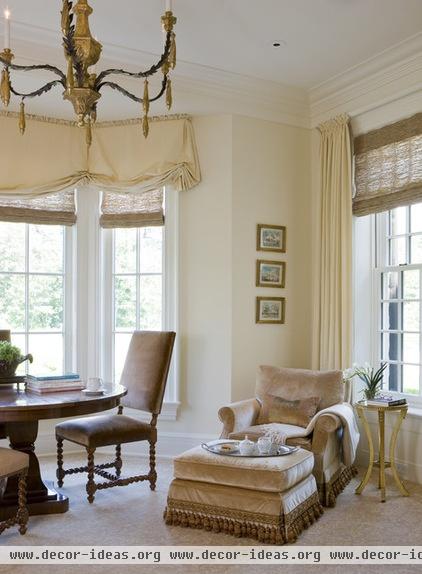
Adding a shade to the valance deals with the need for privacy. Notice, by the way, how thoughtfully the disparate windows in this room have been treated. Because the same fabric was used for the valance and the panels, and the same shades were repeated in the windows, the treatments meld beautifully.
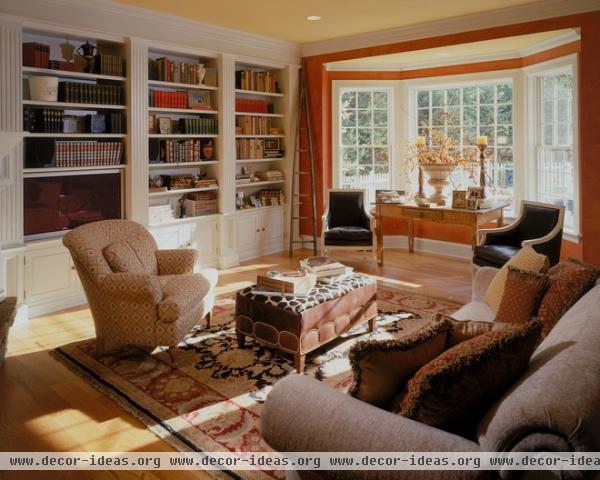
If all of this discussion makes your eyes roll back in your head, consider this: Simply paint a warm accent color on the wall that surrounds your window and hear the room sing.
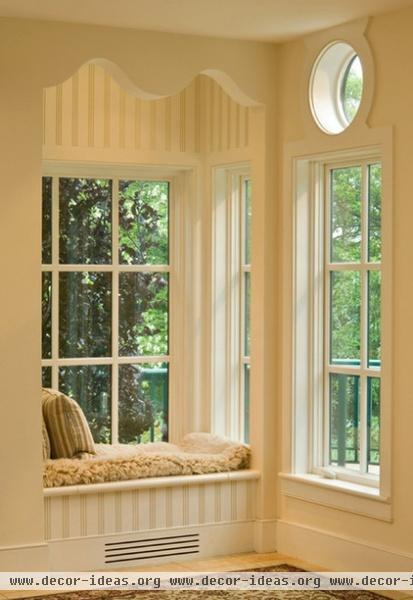
Wallpapering those walls can have the same effect. It’s the ultimate no-treatment treatment.
If you are lucky enough to have gorgeous windows, don’t be in a
rush to cover them. Take all the time you need to study your options, so that when you make your move, you will love the result.
More: Small Wonders: Get More of Everything With a Bay Window
Related Articles Recommended












